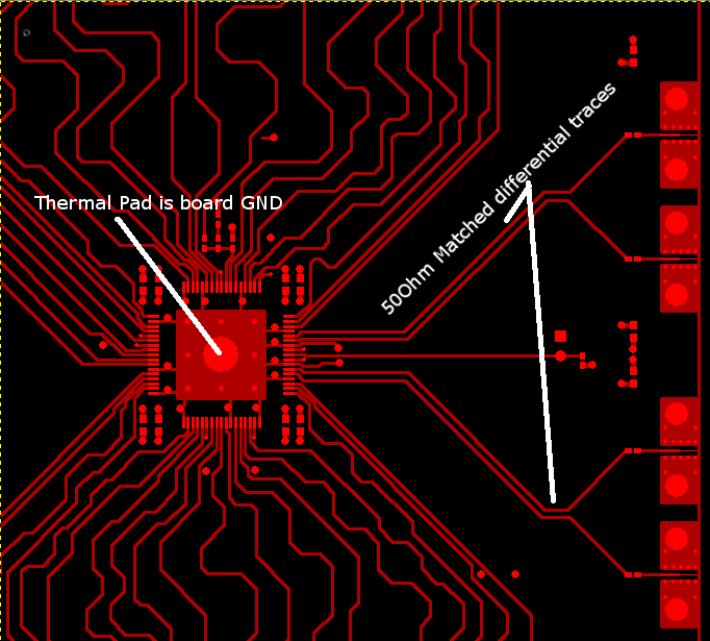Hello,
I am designing a PCB which will have 2 TLK2711. The PCB size is limited. So what i need to ask is two things:
1. The input connector placement. I ma using SMA connectors. 8 to be exact on one PCB. I have designed a basic layout, it would be great if someone could verify it, if it would work or not.
2: Secondly, what I need to ask is, in datasheet its mentioned to make a differential pair 50 Ohm matched. Could anyone please clarify it, either its 2 lines matched at 100 Ohm. i.e one differential pair at 100 Ohm or it is individual tracks matched at 50 Ohm. Which one is it?
Thank you


